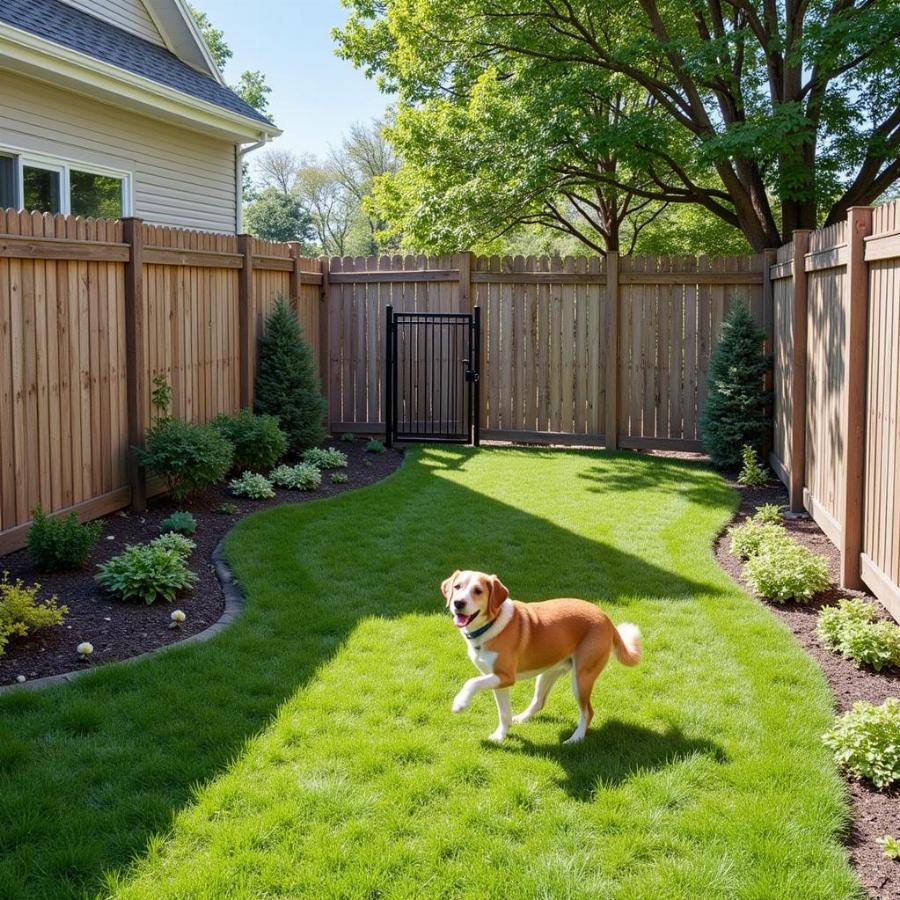Choosing the best fence for your dog is a crucial decision for any responsible pet owner. It not only ensures your dog’s safety and prevents them from wandering off, but also provides peace of mind knowing they have a secure and defined space to play and explore. Whether you have a small, energetic Chihuahua or a large, powerful Great Dane, the right fence can make a world of difference in their well-being and your peace of mind. This comprehensive guide will help you navigate the world of dog fences, exploring the different types, materials, and considerations to help you make the perfect choice for your furry friend.
Factors to Consider When Choosing a Dog Fence
Selecting the best fence for your dog involves considering several key factors. Your dog’s breed, size, temperament, and activity level all play a crucial role. A small dog might be content with a shorter fence, while a larger, more athletic breed might require a taller, more robust structure to prevent escapes.
Dog Breed and Size
Consider your dog’s breed-specific traits. Some breeds are notorious escape artists, requiring a fence designed to thwart their cunning attempts. A Great Dane, for instance, might simply step over a low fence, while a Jack Russell Terrier might dig underneath it. outdoor retractable gates for dogs can be a good option for containing some breeds.
Temperament and Activity Level
An energetic dog will require more space and a secure fence to prevent escapes during playtime. If your dog is prone to barking or territorial behavior, a solid fence might be preferable to a chain-link fence to minimize visual stimulation and potential conflicts with neighbors.
Your Yard and Budget
The size and layout of your yard will influence the type and length of fence you need. Your budget is also a key consideration, as fence materials and installation costs can vary significantly.  Hàng rào cho chó trong sân vườn
Hàng rào cho chó trong sân vườn
Types of Dog Fences
There’s a wide range of dog fence options available, each with its own advantages and disadvantages.
Wooden Fences
Wooden fences offer privacy and a classic aesthetic appeal. They are sturdy and can be customized to different heights and styles. However, they require regular maintenance and can be expensive.
Chain-Link Fences
Chain-link fences are affordable and durable, offering good visibility. However, they don’t provide privacy and can be easily climbed by determined dogs. fence for dogs outside can offer some additional security.
Vinyl Fences
Vinyl fences are low-maintenance and durable, offering a variety of styles and colors. They are generally more expensive than chain-link but less than wood.
Invisible Fences
Invisible fences use underground wires to create a boundary that delivers a mild static correction to a dog wearing a special collar. They are a good option for those who want to preserve their view or have restrictions on traditional fencing. However, they require training and aren’t suitable for all dogs. dog fence for large dogs often require more robust solutions than invisible fences.
Installation and Maintenance
Proper installation is crucial for any dog fence. Ensure the fence is securely anchored and that there are no gaps or weak points that your dog could exploit. Regular maintenance is also important to ensure the fence remains in good condition and provides long-lasting security.
How do you keep dogs out of your yard?
If you’re looking to keep other dogs out of your yard, a solid fence that provides no gaps for them to squeeze through is essential. Consider the height and material carefully to deter unwanted canine visitors. how do you keep dogs out of your yard provides more information on effective deterrent strategies.
Are azaleas toxic to dogs?
When choosing landscaping for your dog’s yard, be mindful of toxic plants. Azaleas, for instance, are highly toxic to dogs. azaleas and dogs details the dangers and what to do if your dog ingests this plant.
Conclusion
Investing in the best fence for your dog is an investment in their safety, well-being, and your peace of mind. By carefully considering your dog’s individual needs, your yard’s layout, and your budget, you can create a secure and enjoyable outdoor space for your beloved canine companion.
FAQ
-
What is the best fence height for a dog? The ideal height depends on the dog’s breed and jumping ability. A general guideline is 4-6 feet.
-
What is the most durable type of dog fence? Vinyl and composite fencing are generally considered the most durable.
-
Are invisible fences safe for dogs? When used correctly and with proper training, invisible fences can be safe.
-
How do I prevent my dog from digging under the fence? Bury chicken wire or install L-footers along the bottom of the fence.
-
What is the best fence for a dog that climbs? A tall, solid fence with an inward-leaning top can deter climbers.